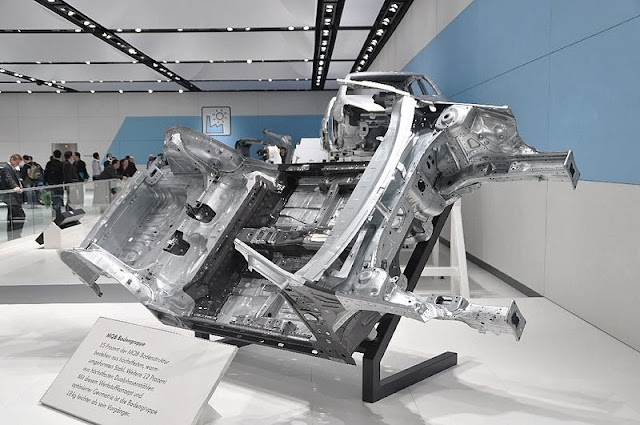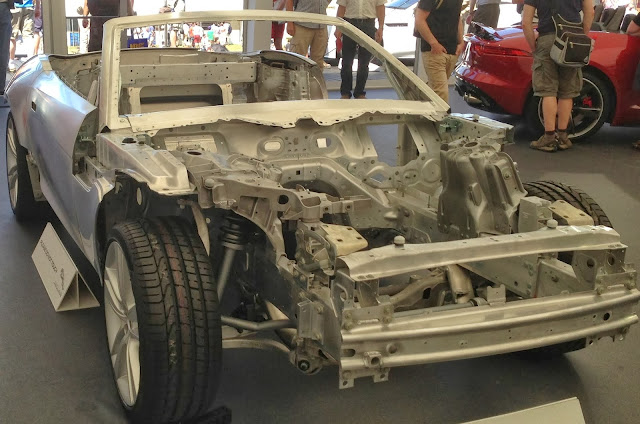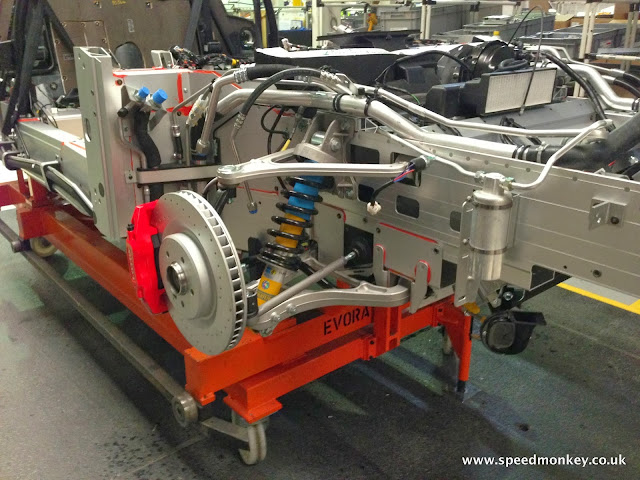All Volkswagen group cars will feature a chassis mainly made from hot formed steel. Has VW given its cars a weight disadvantage?
 |
| Volkswagen's MQB platform |
The MQB platform pictured above forms the basis of the current Golf, Octavia, Leon and A3 and is expected to be used for the new Scirocco, Caddy and a whole host of other cars. Similar platforms serve the lower and higher end of VW products.
Now take a look at the image below, from www.autoindustryinsider.com. As you can see the majority of materials used in the MQB platform are various grades of steel.
 |
| VW MQB platform material components |
Steel is heavy. In hot formed basis (high-strength) it is dense, immensely strong and very heavy. It is also quite cheap compared to aluminium.
Now look at the following two photos, which I took. The top one is a Jaguar F-Type chassis and the bottom one is a Lotus Evora chassis. Both are almost entirely made from aluminium. In fact the Evora only has a steel subframe to accommodate the engine at the back, because steel has better heat absorbing qualities than aluminium.
It may or may not be coincidence but these two cars are the best handling of any I have driven since starting Speedmonkey back in June 2012. In that time I've driven upwards of 70 cars.
Both allow a higher degree of control on the road than others because they allow you to feel the road better than other cars. In my mind this is due to the stiffness of the aluminium chassis which allows the engineers to better set up the suspension.
 |
| Jaguar F-Type aluminium chassis |
 |
| Lotus Evora aluminium chassis |
The Evora and F-Type aren't as light as you might expect. The Jaguar weighs 1614kg and the Lotus weighs 1436kg. But both have large capacity V6 engines, and a supercharger, and they are both high-end cars so come trimmed in leather and Alcantara, the seats are comfy and that's before we start on the tech and associated wiring.
Using a very similar chassis the Lotus Elise weighs 876kg. It uses a 1.6 litre engine and has much less in the way of luxuries. In other words the Evora's weight is down to engine, luxury and tech, and largely the same can be said of the F-Type.
When Jaguar's new hotfire engines come on stream and a lightweight 4-pot is slotted into the F-Type it will weigh a lot less than it does now with it's V6 and V8. Ditch some of the luxury and it'll handle even better than it does now.
The MQB platform might be cheaper to make but by using hot formed steel it comes with a built-in deficiency - more weight. And when it comes to weight lightness is good and heaviness is bad - for speed, efficiency, handling and eco-credentials.
Volkswagen has invested billions of euros in its platforms. But has it backed the wrong material technology?
By Matt Hubbard
